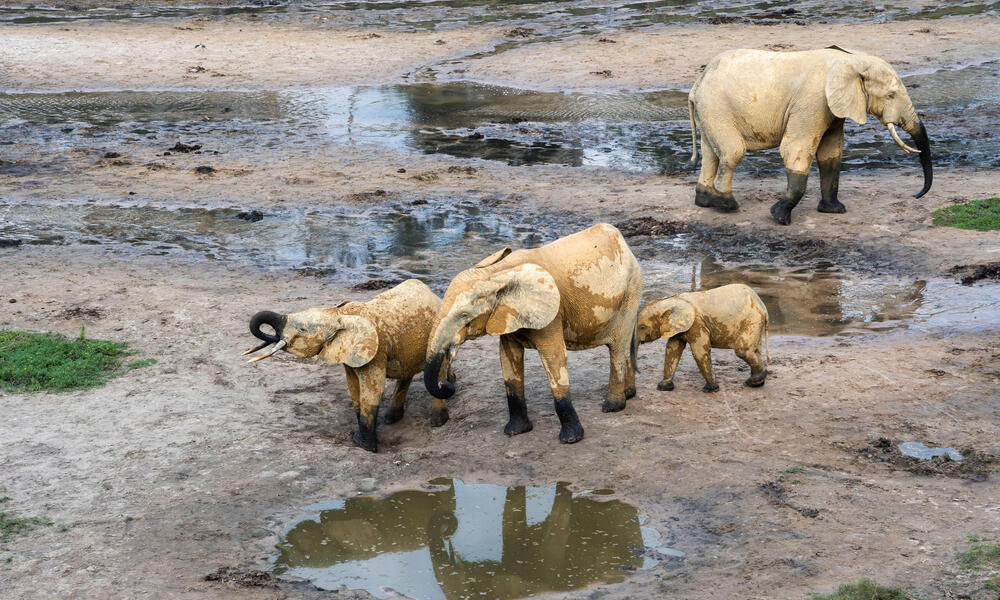Elephants’ important role in maintaining biodiversity and healthy ecosystems has earned them various names including ecosystem engineers, seed dispersers, and forest gardeners. However, African forest elephants—a species inhabiting the dense rain forests of central Africa—are increasingly recognized by another name: ‘climate hero.’
The smaller and more elusive cousin of African savanna elephants, forest elephants help with climate change mitigation by increasing carbon storage in their forest habitat, meaning they remove heat-trapping CO2 from the atmosphere. They do this by influencing the shape of the forest structure, including by increasing the diversity, density, and abundance of plant and tree species. It’s estimated that one forest elephant can increase the net carbon capture capacity of the forest by almost 250 acres.¹ This is equivalent to removing from the atmosphere a year’s worth of emissions from 2,047 cars.
Here are some of the ways forest elephants are earning their climate hero name.
Superpower: Forest clearer
“As strange as it seems, all that eating and apparent destruction help the forest pull more carbon out of the air,” says Alison Pearce Stevens in the Animal Climate Heroes book.
Elephants have large appetites and eat more than 400 pounds of food a day, so they spend a lot of time foraging.² As these megaherbivores lumber through the forest eating, they do a lot of damage to the surrounding vegetation. Stepping on, knocking over, and stripping leaves and branches off trees, elephants dramatically reduce the density of vegetation, particularly smaller trees, which contain a lower carbon density. Less competition for water, light, and space makes way for the growth of larger, slower-growing trees with denser wood and branches that form higher and wider canopies. These factors lead to the survival of trees that have the capacity to absorb and store more CO2.
Superpower: Planting powerhouse
In addition to the helpful destruction that results from elephants’ foraging, their appetite for nutritious fruits produced by carbon-dense trees helps to promote forest growth. This is because elephants disperse the fruit seeds. In other words, the seeds pass through the elephant until they drop back to the forest floor through dung.
This is an important step because some seeds won’t germinate without traveling through the elephant’s digestive system first. Seeds can have a tough covering that makes it harder for them to sprout. So the journey the seed takes—from being chewed and ‘roughed up’ in the elephants’ mouth to then being digested and weakened by their stomach acid—helps soften the seed’s shell. This directly promotes the growth and spread of some of the largest trees in the forest, which have a high capacity for carbon sequestration.

